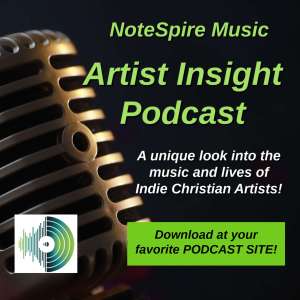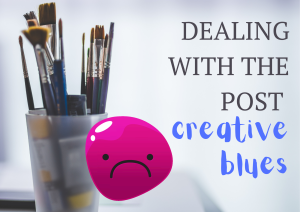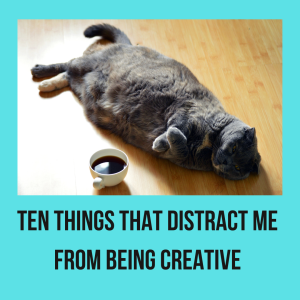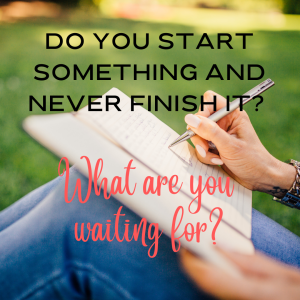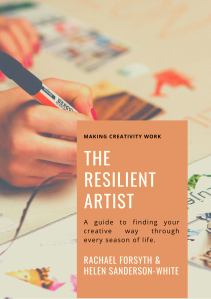Do you start something and never finish it? Do create something beautiful and then never release it to the world? Do you have notebooks full of endless ideas, but they never come to life?
No one wants to talk about the discipline. It’s a word that has had a negative public image; it’s not on trend, it invokes ideas of mundane and laborious tasks. However, it is essential for artistry, and I do believe that it also goes hand in hand with confidence. When we discipline ourselves to do something, we are committing to the act, the project, the creation but also to our own personal growth.
There are different areas of artistry that need discipline (and many more besides this list):
- Practise and learning
- Work pattern
- Public image
- Releasing and publishing work
- Discipline our skills and learning
Netflix, social media, housework all these things seem suddenly more important than practising our instrument or learning a new skill. Anything to distract us from what we’re supposed to be doing. Sometimes we get caught up in running a business and forget to hone the expertise that makes the money. The development of an artist is dependent on the frisson of the new; boredom can so easily set in and we lose our focus. Equally we need to discipline ourselves not to continually chase excitement but also finish off what we have started. Satisfaction comes from seeing a project through to completion and knowing that we did our best. With each project, there is a danger that we can reach a point where it seems ridiculous or banal; it’s not turning out how we expected and it seems futile. This where the discipline of pushing through the difficult stages and remembering our original vision and can help us produce the final product.
Discipline our commitment
Most problems come from having too many ideas and not enough time. We shoot off in different directions without finishing what we’re doing. It’s in the continual plugging away at a project, where we see the fruit of our labours; the commitment to see the project through to completion. I list all my ideas and then think about them for a while before actioning them. Usually 50% of the ideas I’ve jotted down, turn out to be notions that seem to be brilliant at 1am but in the cold light of the morning aren’t actually very good. Time and space help to whittle down the ideas into something viable and workable, and in the long run I’m doing myself a favour by not over-committing to projects I can’t fulfil or starting tasks that are ridiculous!
Discipline our confidence
Our issues with discipline often start with a lack of self-belief, we sell ourselves short even before we start the task. The eternal problem of “will this piece of work be well received?” knocks our confidence and that with a combination of a poor audience reception or lack of interaction put us off achieving our goals. I have found that if I put aside the questions and concerns in my mind before I start working, then I can create on the basis that it is either something that makes me happy or that my message is something that needs to be said.
For some, the lack of confidence appears when it is time to release a project. The fear of lack of support and failure looms, and the project sits on a shelf never to be used. There are also occasions when we create something but can’t figure out how to market it. The strategy to create a buzz evades us and the project doesn’t reach its potential. This is where we need to put our feelings to one side and take the plunge. Build an audience, learn how to market and then go for it. We need to plan further than completing the work; a point of publication is equally as important as the germination of the original idea. I have a small group of cheerleaders and who encourage me to keep going to release my work. They give vital feedback and share ideas that keep me on track. It is worth building an inner circle who can speak the truth when you most need it.
Is discipline essential for artistry?
Yes, if we want to be the best version of our creative selves and to produce the best work that we can. It’s not that discipline is onerous but rather that it is habit forming in a positive way. Our greatest achievements come from continually plugging away and seeing the project through to fulfilment. All the creative masters had to learn to dedicate themselves to their craft and its development; they have a wealth of work to prove this.
We often assume that our creativity is all about us, however there are people around the world who need what you have to say, paint, sing, play. It may be as small as cheering up their day, or as great as being a life changing experience. The actor, Bill Murray, once stated that a painting stopped him from committing suicide. We never know what some will take from our art, but we do need to hold it lightly and allow it to be receive by those who need it.
So if there is an area in your work that is lacking, it may need some direction and drive to bring forth the gold you are waiting for. Discipline may seem daunting but it leads to a greater depth and understanding of why we are creating.
If you have enjoyed this song, join the mailing list here

